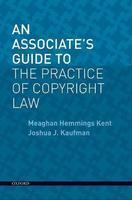James Madison submitted to the framers of the Constitution a provision “to secure to literary authors their copyrights for a limited time.” ~August 18, 1787
The various forms of intellectual property (patents, copyrights, trademarks, etc.) all have roots in European laws developed over centuries. The precursor of modern copyright law first appeared in Britain in the fifteenth century in response to Gutenberg’s printing press (a form of mass copying).
The first copyright law was a censorship law, which established a guild of private-sector censors, the London Company of Stationers. The Stationers were granted a monopoly over all printing, old works as well as new, in return for keeping a eye on what was printed.
Hence, copyright laws are often not the most straight-forward topics to discuss. They have their own sets of unique and arcane rules to remember, each with their own pitfalls and traps for the unwary. Therefore, it is foolhardy to practice in such minutia-filled legal practices without being well-versed in the particulars.

An Associate’s Guide provides readers with guidance on conducting legal tasks and research. The authors give practice-oriented advice on topics such as what questions to ask a client, what research to conduct, what elements must be met for various causes of action, the potential repercussions for various actions and the proper alternatives to be considered.
This is a great desk handbook for anyone working with clients who are in an industry that produces copyrightable materials. While it starts off with basics, it quickly plunges neck-deep in ares like copyright transfers, the Digital Millennium Copyright Act (DMCA), cease and desist letters as well as a detailed coverage of the steps in copyright litigation from steps to take prior to filing a claim to initial motions to counterclaims to post-trial motions. The section includes detailed discussions of remedies, depositions and the use of experts.
The book is well laid out and contains handy call-outs of practice tips all along the way. The book is structured so that it can be read by skipping around to the sections of interest and contains a very thorough review of the topics while pointing the way to more in-depth sources where needed.
Practice Tip
Discuss the declaratory judgment standard with your client before sending a cease and desist letter. You do not want to have to explain after the fact how you got her sued in a faraway state because of your letter.
The book also includes some sample documents and pleadings, references to secondary sources and key cases in copyright law. A CD-ROM containing some forms in electronic format, is included. (*Why don’t all books don’t come with such supplementary material??) The dozen or so forms won’t replace the standard forms books but is a nice addition for the selected forms included such as samples of a cease and desist letter, complaint and interrogatories.
We highly recommend this desk reference to practitioners at any stage who are not familiar with all the nuances of copyright laws. The practice tips are invaluable.
“An Associate’s Guide to the Practice of Copyright Law“ 344 pages (Oxford University Press, USA; 2009) is available from Amazon.
About the Authors
Meaghan Hemmings Kent is a senior associate at Venable, LLP, where she focuses her practice on intellectual property litigation, including patent, trademark and copyright claims. She also has experience in trademark prosecution before the USPTO, and proceedings before the Trademark Trial and Appeal Board.
Joshua Kaufman is a partner at Venable, LLP, where he is the head of the firm’s Copyright and Licensing group. He counsels and litigates in the fields of copyright, e-commerce, licensing, art, intellectual property, software, on-line issues, trademark, entertainment, media and literary law.

Hello,
Lots of good information in your posting, I would like to tweet your blog post so I can visit again in the near future.